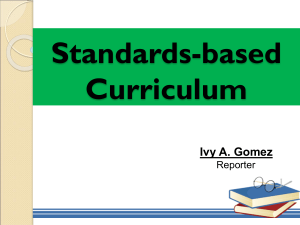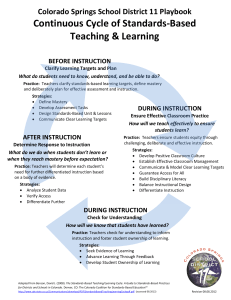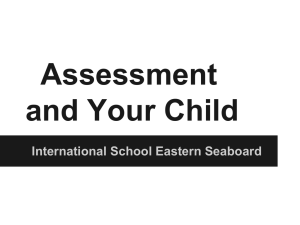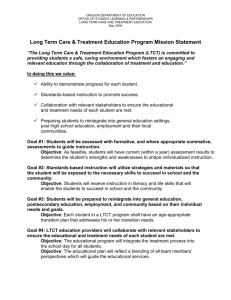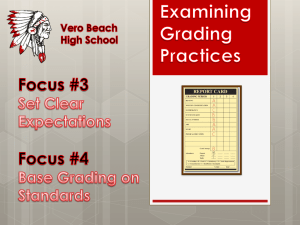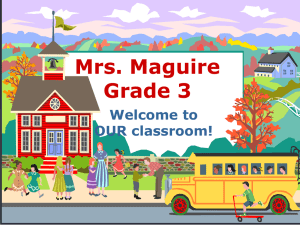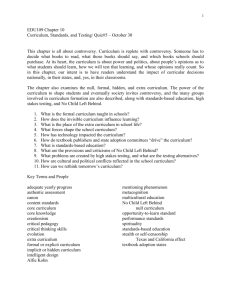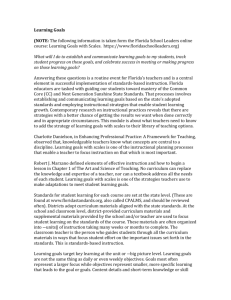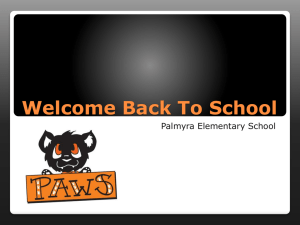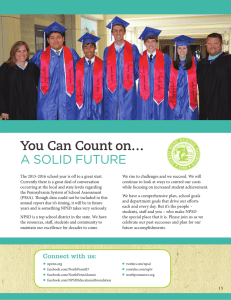report card info-Parents - North Providence School Department
advertisement
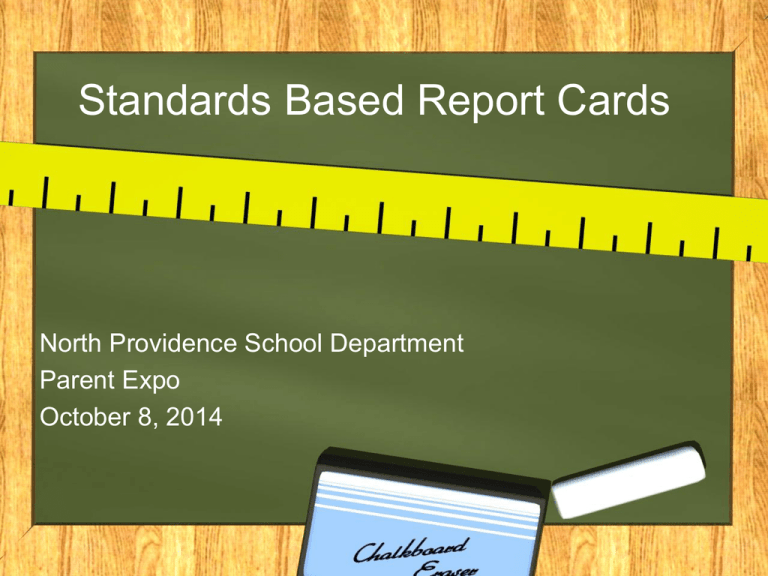
Standards Based Report Cards North Providence School Department Parent Expo October 8, 2014 New Parent Portal and Electronic Gradebook Common Core State Standards Common Core State Standards (CCSS) are a shared set of national learning expectations in mathematics and language arts that define what students should understand and be able to do at each grade level by the end of the school year. Rhode Island adopted these standards along with the majority of states. What is a Standards-Based Report Card? A standards-based report card lists the most important skills students should learn in each subject at each grade level. NPSD’s new Standards-based report cards are completely aligned with the Common Core State Standards. NPSD’s previous report cards had the same skills for each grade level with a rating scale of outstanding, satisfactory, needs improvement, unsatisfactory. Report Card Samples Video Essential Components: 1. A description of what a student should know and be able to do at a given grade level. 2. A curriculum framework/roadmap a teacher uses to ensure that they teach to the standards. 3. Assessments a teacher uses to measure the extent to which a student has met the standards. 4. A reporting tool which communicates accurately a student’s progress towards meeting standards of their given grade level throughout the school year. Case Study Fifth graders, Olivia and Patrick both received a D- on their report cards What does this mean? Case Study (continued) Second Trimester Grades Emily 84 80 75 85 83 B David 91 100 100 82 85 A- Olivia 62 59 58 55 66 D- Betty 87 95 83 92 88 B+ Patrick 0 7 98 100 95 D- Karen 98 94 89 100 93 A Scoring Based on a 4 Point Scale Student scores will be based on a 4 point scale. This represents categories as follows: 4- Exceeding the Standard 3- Meeting the Standard 2- Approaching the Standard 1- Not Meeting the Standard Exceeding the Standard (4) A “4” on indicates the student’s progress exceeds standards because s/he has demonstrated mastery in terms of knowledge, and – Applies that knowledge in ways that go beyond expectations. – Typically, very few students would be at this level of performance. – In terms of behavior, students receiving a “4” demonstrate academic and social maturity beyond their years and those of their age/grade appropriate peers. Meeting the Standard (3) On a standards-based report card, a mark of “3” is the expected goal for students, which indicates that the student is: – meeting the requirements of the academic standards for his/her grade level. – Marks of “3” and “2” both indicate that a student is working within the expectations of his/her grade level. – The difference is the level of independence and support a student needs to demonstrate mastery. – The expectation is that most students will achieve a “3” by the end of the year for each grade-level standard. – Learners are scored on their progress made toward mastery of those expectations set forth for each marking period. Approaching the Standard (2) A “2” indicates that the student’s progression of skills and information is in the expected range, but… – Requires support and assistance to meet the requirements of the academic standard for his/her grade level at this time. – In terms of behavior, a student would receive a “2” for any of the academic or social behaviors when s/he inconsistently demonstrates or needs reminders to meet the age/grade appropriate expectations Not Meeting the Standard (1) A “1” indicates that the student is not meeting the requirements of the grade level standard at this time. – The instructional level is characterized as requiring maximum teacher support and – differentiation/accommodations or even modifications. – In terms of behavior, receives a “1”. When behaviors are interfering with their learning and possibly the learning of others. The new Standards Based Report Card • Aligns with RIDE & CCSS • Aligns standards, instruction, and assessment into a complete framework for teachers • Measures how well a students is doing in relation to the grade level standards rather than the work of others students. • Provides parents with better understanding of their child’s strengths & weaknesses. • Gives more specific information about what students should know & be able to do in all academic areas. • Allow students to play an active role in their level of achievement through the use of rubrics & awareness of standards.
